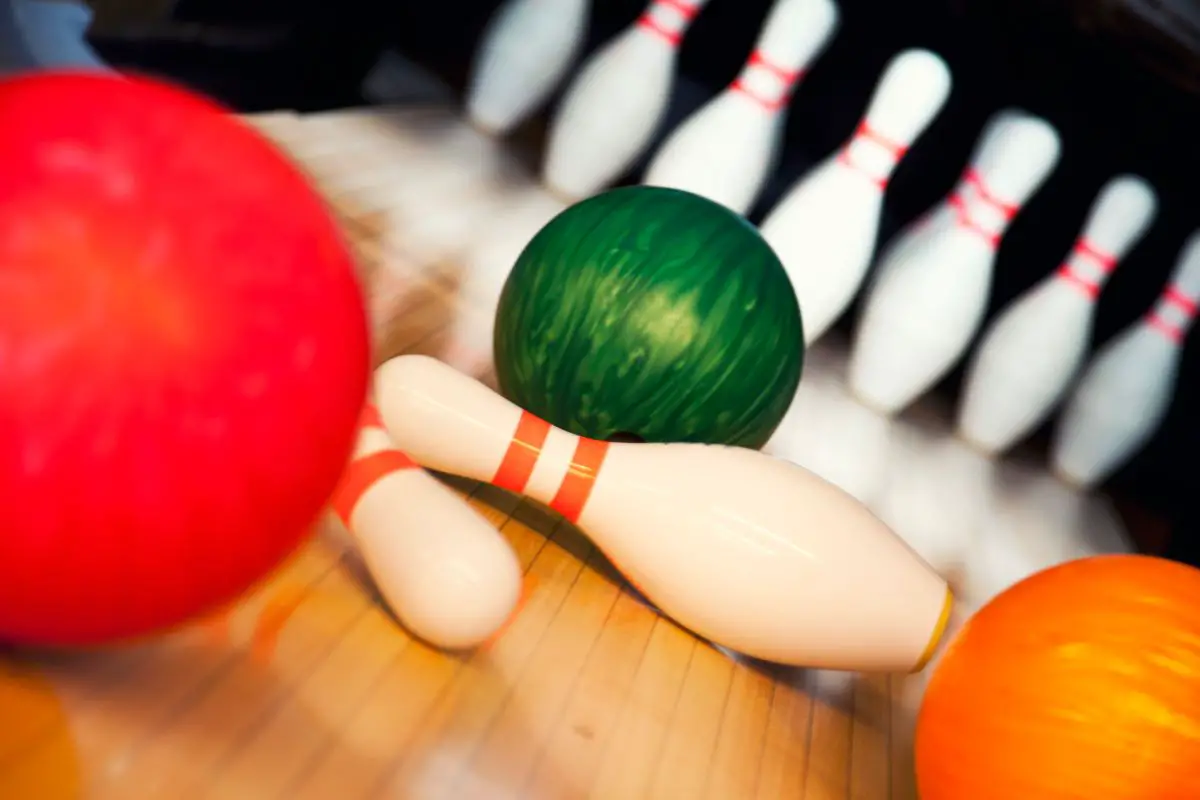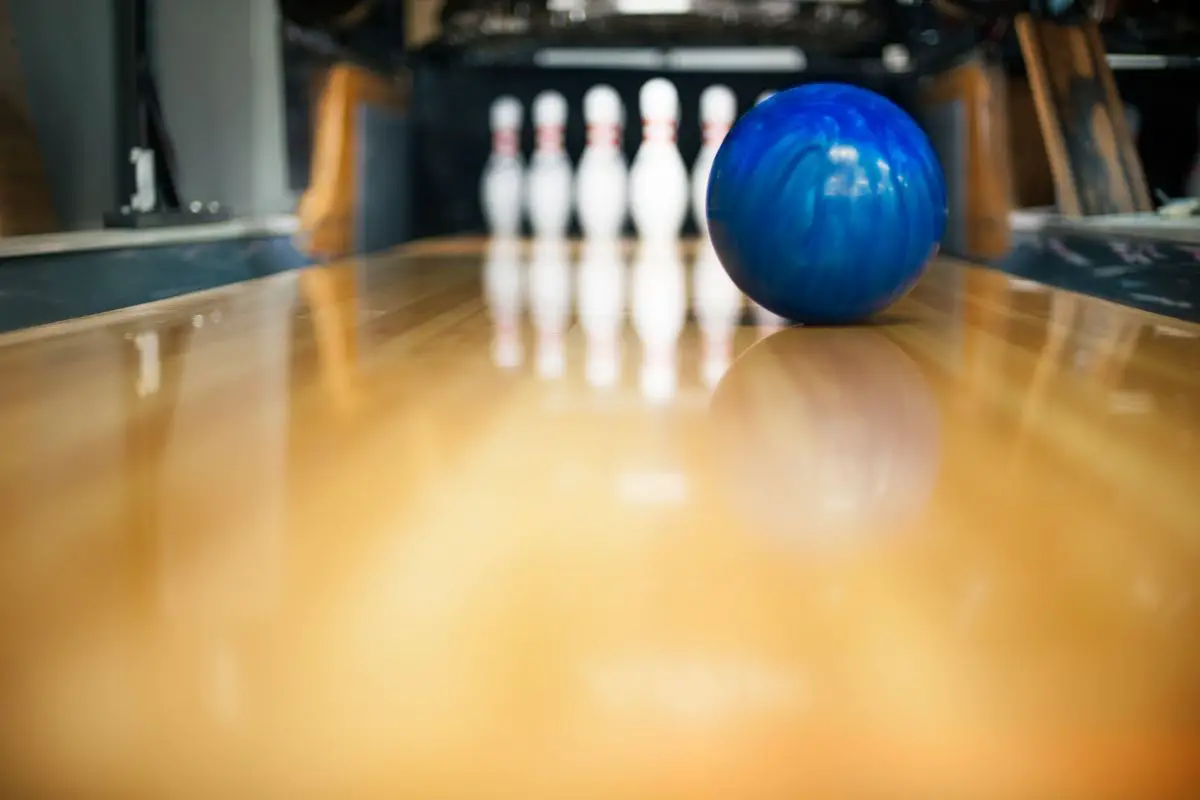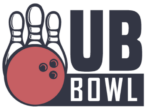When we all first start bowling, speed is one thing we might have at the back of our minds, but we don’t really focus on it too much.

We know the speed will surely affect how fast and how strong the ball strikes down the pins, but are there levels to bowling balls and do they really make that much of a difference?
Being able to control a ball’s speed can be one of the most challenging but rewarding techniques in bowling that will help you gain much more consistent and higher scores while you play, being a crucial factor in how the game is played and how good a player really is at striking down pins.
The speed of a bowling ball and how to make it slower or faster is a crucial part of any bowler’s game, so keep reading to learn all about the average speeds of bowling balls, how you can adjust this while playing, and why the speed of a ball even matters in the first place.
Why Does Speed Matter?
Speed is one of the most important factors when it comes to bowling because it can help you learn more about your style as a player.
Some players prefer slower, more accurately placed shots while others prefer a much faster and straight down-the-line shot that is sure not to miss.
This all comes down to personal preference as one particular speed does not necessarily trump all others, for example, there are so many occasions where a player might think that a hard and aggressive strike is the best option for hitting a strike, however when they go to do it they find the ball just swerves into the gutter, and the same happens with players who try a slower throw.
Experimenting and finding the right technique for you is vital for mastering your speed and rhythm.
This may not be as much of a worry if you are just casually bowling every now and again and don’t want to get too competitive, however, once you notice your preferred rhythm it can help you improve as a player by a tremendous amount.
Additionally, the speed of a ball can drastically change how the ball reacts once you release it, but it can also be crucial to keep in mind depending on the state of the lane and whether it’s more oily or dry since this can affect where the ball goes.
What Is The Average Bowling Ball Speed?
The average ball speed is anywhere between 16 and 19 mph. This is often the speed we will throw a ball when we are not focusing on adding too much or too little power to the ball and are just looking for a straight-down-the-line shot.
A typical bowling ball will take around 2.5 seconds to hit the pins at an instantaneous velocity of 16.7 mph which can more often than not be closer to 18 mph.
In terms of professionals, they often aim for a ball to travel between 18 and 19 mph with any lower being considered a weak throw that won’t carry as much power toward the pins.

Slow Ball
A ball thrown under 16 mph is considered a slow ball and while this might sound negative, it can actually come with quite a few advantages.
For one, because a slower ball causes less friction it will give the ball more time to hook.
A hooked ball can sometimes be far more effective to pull off rather than a regular straight strike because it can grant a better angle at the 1-3 pocket and can hit the pins with more force, producing better carry.
Just make sure if you do want to hook a ball that you don’t throw the ball too slow since this can cause it to lose a lot of its action power by the time it reaches the pin, or it can end up swerving into the gutter.
You’ll want to try and throw the ball just under the 16 mph threshold to make sure it remains strong enough to knock pins down.
There are a few ways to pull off a slow ball, one is by moving closer to the foul line on approach with approximately 2-4 inches as the starting point.
Make sure to keep the footwork the same and keep your arm movements and steps in sync.
Moving closer to the foul line automatically slows down your walk, simply because in our heads we know we don’t want to actually cross the foul line so it holds us back and produces a much slower ball, perfect for carefully placed hooks.
Another easy way to slow down a ball is by changing the height of a backswing.
By holding the ball a little lower during your stance, it will make the actual backswing lower and the ball slower upon release.
Fast Ball
Any balls traveling above 19 mph are considered fast balls which too have their own benefits.
A fastball is essentially best used when you don’t want to hook and instead want a nice and powerful shot straight down the middle, such as during the first half of a frame when you are eager to score a strike.
Because a fastball causes more friction when thrown, it is harder to hook and therefore is not advised if you are trying to curve the ball around.
Attempting a hook with a faster ball can send it straight into the gutter and make for a pretty disappointing throw.
For a straight shot, however, if you can get used to the technique and muscle power required to launch the ball fast enough, then it can be a great strategy that can almost guarantee strikes after enough practice.
One way to practice pulling off a fastball is standing back from the lane a bit more than normal, try having a few inches in between as your starting point, this will make your walk faster on the approach and add a bit more power and speed to the ball once it’s released.
You can also try and throw a fastball by holding up the ball higher than normal during your stance which will create a higher backswing and cause the ball to travel faster.
Try opening your shoulders and hips slightly to be able to get the arm higher when it’s behind you.
Lane Oil Conditions
The conditions of a lane can also change the speed of a ball and can require you to throw in a slightly different way.
Knowing how to adjust your speed when noticing the conditions of a lane can help you adapt and get higher scores while you play.
This all depends on how much oil has been put on the lane, if a lane is considered ‘wet’ then this means there is much more oil on the surface than usual which can drastically affect how the ball moves around.
In contrast, a ‘dry’ lane is one with very little oil present which will also affect friction levels and the speed of a ball.
If a lane is wet and has a lot of oil on its surface, then a slower ball is the preferred speed option since it will give the ball a much higher chance to hook rather than skid.
For drier lanes with minimal oil, faster balls are more suited since the chances of them swerving to the side are much lower allowing for a much more direct strike.

How To Calculate Ball Speed
If you are curious as to the speed of your ball throwing, then it can be a fun idea to actually try measuring it for yourself.
This is actually a very worthwhile strategy used by professionals which can allow you to learn more about yourself as a player and whether you might need to either speed up or slow down your game for the best results.
Luckily nowadays most automatic scoring systems can detect the speed of a ball, along with keeping each player’s score.
Most scoreboards have this feature and it can be incredibly useful as a quick estimate, however, the devices will usually only give you one measurement of speed and are not measured at the point of impact which can make it very hard to calculate the overall average speed.
A more practical and reliable way to do this is with a stopwatch, this will more accurately measure the time from the bowling ball’s release to the moment of pin impact with no technical hiccups.
Simply have a friend ready themselves with a stopwatch and tell them to start and stop from the point you release the ball and upon impact on the head of the pins.
Repeat this five times with your friend measuring the time of each separate throw and once all five throws are recorded, average the score and plug it into a bowling speed chart which is the most accurate tool for predicting ball speeds.
The chart will present you with your average bowling speed and can be a great indicator of what small additions you may want to make to your game.
Does Weight Matter?
The actual weight of a ball will affect its speed, however, you can throw a fast or small ball with any ball weight as long as you have the right technique.
Technically a heavier ball will roll slightly slower than a lighter ball, this is because the heavier ball imparts more energy compared to the lighter one, which is also why they have a much firmer impact when they hit the pins.
Try not to pick a weight depending on this and instead choose a ball that you feel comfortable throwing instead as all balls can be thrown in a fast or slow manner as long as you take the time to practice.
Summary
Speed is incredibly important in bowling and should always be taken into consideration depending on the lane conditions and how competitive you want to be.
If you really want to improve, it can be worth monitoring your speed regularly to see which style you see the most success with.
- A Comprehensive Guide to the Top Bowling Movies of All Time - December 23, 2023
- Bowling Shoes Selection Guide: How to Choose the Right Fit - September 27, 2023
- Bowling Ball Buying Guide: How to Choose the Right Ball for You - September 23, 2023
